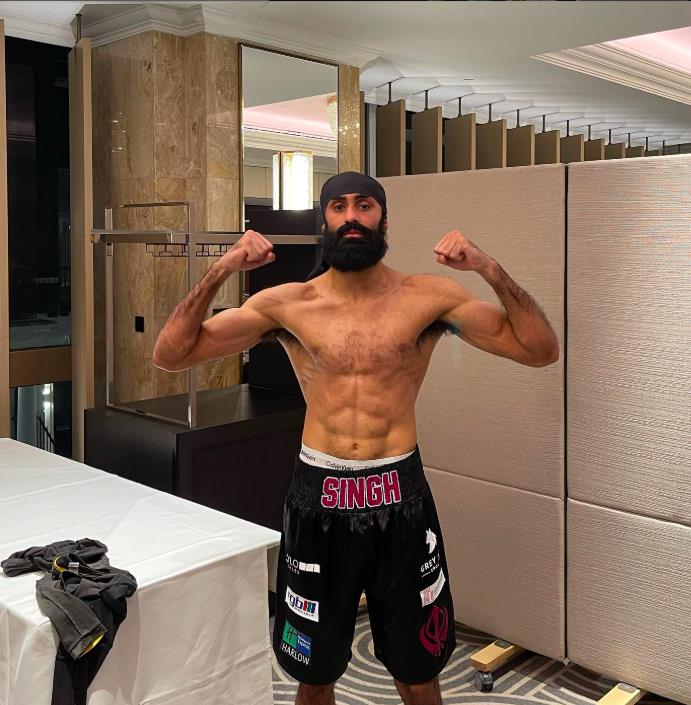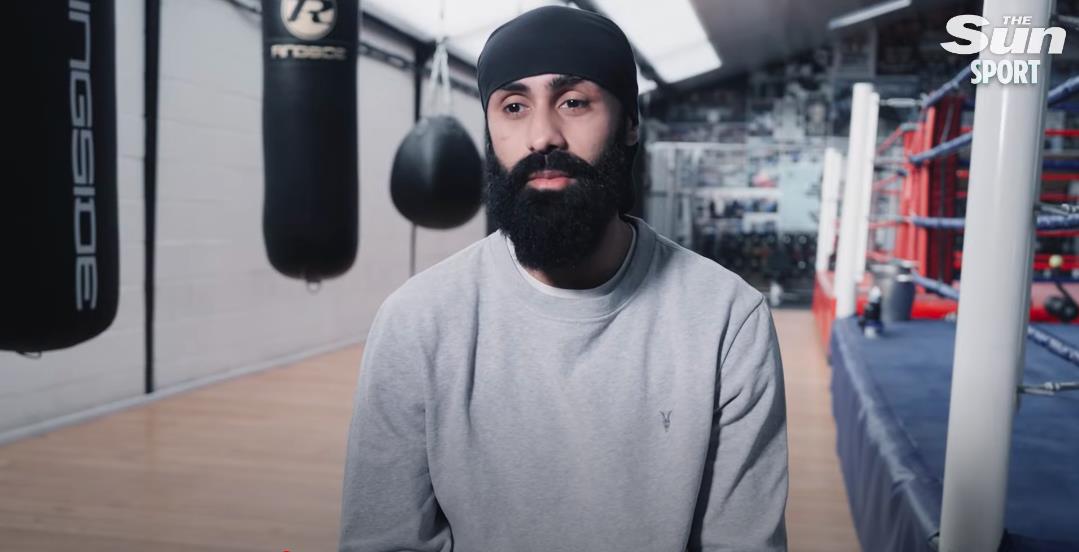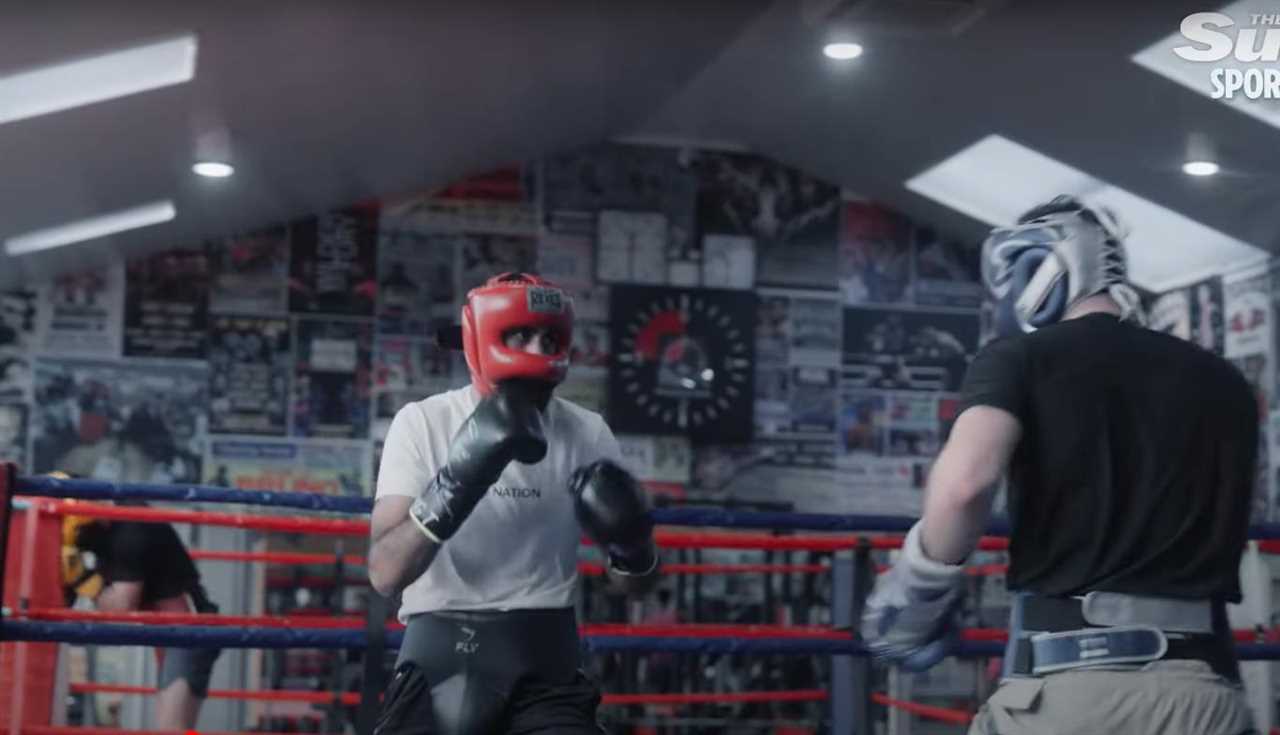
Champion with a Cause
Inder Bassi is not just making waves in the boxing ring; he's also leaving a significant impact outside of it. With a professional record of 14 wins and 2 losses since turning pro in 2019, Bassi builds on an impressive amateur background, boasting 50 victories out of 75 bouts.
One of Bassi's most notable contributions to the sport was his role in challenging and ultimately changing the long-standing amateur boxing rule that required fighters to shave all facial hair. As a proud Sikh, Bassi faced a unique challenge, as his faith prohibits cutting or shaving hair.
Changing the Rules
Bassi spearheaded a campaign to amend the rule, which was initially implemented to prevent cuts from facial hair during matches. His efforts paid off in 2019 when England Boxing lifted the beard ban, allowing Sikh boxers like him to compete without compromising their religious beliefs. Bassi's story is highlighted in SunSport’s latest episode of Contender on YouTube.
"Overturning the beard ban is something people often associate with my name," Bassi shared. "In amateur boxing, unlike other combat sports like Muay Thai or kickboxing, fighters weren't allowed to keep their beards. This restriction held back many Sikh boxers, preventing them from pursuing the belts they strive for."

Training at a Legendary Gym
Bassi hones his skills at the renowned Peacock Gym in East London, a training ground for some of boxing’s greatest names. "It's one of the most famous gyms in the country. Legends like Floyd Mayweather and Prince Naseem have trained here," he remarked. Being part of such a prestigious gym adds to his growing reputation and provides him with top-tier training opportunities.
Resilient Comeback
After a setback in July, where Bassi faced a defeat in an English title bout against Sean Noakes, his promoter Jon Trethewey remains supportive. "Sean won that night and deserved it, but I don’t think we saw the best of Inder that night," Trethewey commented. Bassi has since bounced back, securing victories in his last two fights and demonstrating his determination to climb the ranks.
Stamford Bridge Showdown
The next milestone for Bassi is a high-profile fight at Stamford Bridge in Chelsea, marking the first-ever boxing event at the iconic football stadium. The event features American legend Roy Jones Jr and former European champion Spencer Oliver. Bassi will face off against Lucas Ballingall from Portsmouth, who holds an 18-2 record, in what promises to be a thrilling matchup aired on Fight Zone.
Bassi expressed his excitement about the event, saying, "When I tell people I’m boxing at Stamford Bridge, some might think it's an unusual choice, but it's incredibly exciting. Everyone is looking forward to it."

A Dream Realised
Visiting Stamford Bridge left a lasting impression on Bassi. "Expect the unexpected and put in the work; opportunities will come. Boxing here is a dream come true for me," he reflected. Being part of such a significant event underscores his dedication and ambition in the sport.
"It's everyone’s dream to box on big stages with bright lights, and being part of this event is a huge milestone for me," Bassi added with a smile. As he prepares for his fight at Stamford Bridge, Bassi continues to inspire both his community and aspiring boxers with his resilience and commitment to excellence.
Frequently Asked Questions
What are the main components of a professional boxer's routine?
The training regimen of a boxer is usually composed of several important components. Technical skill development, strength and conditioning exercises, sparring and mental preparation are all part of a boxer's training routine. The tactical drills will help you develop your fight strategy. Technique-focused training improves punch accuracy, defensive maneuvers, and defensive techniques. Training exercises increase athleticism and sparring gives you a practical fighting experience. Mental training is aimed at building resilience, confidence and focus.
What is required to begin training in professional boxing?
Before beginning to train for professional boxing one must be committed to physical fitness and discipline. They also need to have an eagerness to learn. To begin training, it is important to learn all the fundamentals. This includes stances, footwork techniques, punches, defensive techniques, etc. It's imperative to join a reputable boxing gym with experienced trainers who understand the nuances of professional competition. To develop their skills, new boxers will undergo rigorous conditioning drills as well as sparring and technique drills.
How important is mental toughness in professional boxing?
Mental toughness, just like physical conditioning, is essential in professional fighting. The sport demands resilience, focus, the ability to handle pressure, and the psychological fortitude to overcome adversity. Mental preparation includes visualization, stress management, and developing a mindset that is ready to face the challenges in the ring. A boxer without mental toughness may find it difficult to perform well under the extreme conditions of a professional competition.
How do amateurs progress to professional boxers?
The transition from amateur boxing to professional requires a significant increase in training intensity and mental preparation. An amateur must demonstrate a high level of performance by taking part in local or national competitions. It is also critical to obtain a professional boxing license and align with experienced managers and trainers who can guide career decisions and secure professional bouts.
What should a potential boxing trainer or coach look like?
A boxing coach should have experience in the sport, be able to work with other boxers successfully, have a compatible coaching style, as well as a solid understanding of its technical and strategic components. A good coach will also stress safety, conditioning and personal growth. In order to reach your potential in boxing, it's important to have a trainer who motivates and communicates effectively.
How long does it take to become an elite boxer?
The time to become professional boxer can differ greatly. The time it takes to become a professional boxer can vary widely. It all depends on an individual's skill level at the start, their ability to adapt to the sport and the quality training they receive. It can take a number of years to develop the necessary skills and gain enough amateur experience. Some exceptional talents may progress more quickly than others, but some will need more time.
Anyone can learn how to box professionally.
Even though boxing may be accessible to all, not everyone is cut out to compete professionally. Professional boxing requires a unique blend of talent, physical abilities, mental toughness, and dedication. The sport has inherent risks that potential boxers will have to be willing and able to take. A thorough assessment by a coach can determine if a person has the potential to make a career out of boxing.
Statistics
- Statistical data indicates that there has been a 15% increase in the number of professional boxing gyms over the last decade.
- On average, a professional boxer spars between 100 to 200 rounds in preparation for a major fight.
- The average age for boxers to turn professional is between 18 to 25 years, though many continue to compete well into their 30s and beyond.
- Less than 10% of professional boxers are undefeated throughout their career, highlighting the sport's competitive nature.
- Around 60% of professional boxers supplement their income with other activities or jobs, due to variability in fight earnings.
- A study showed that most professional boxers have spent more than 4 years in training before their first professional bout.
- Professional boxers typically train 4 to 6 hours per day, 5 to 6 days a week, depending on their fight schedule.
External Links
How To
How to Build Endurance for Boxing
Building endurance is essential for sustaining energy throughout a boxing match. To improve cardiovascular health, engage in aerobic exercises like cycling, running or swimming. For explosive power, incorporate high-intensity interval training (HIIT) in your workouts. The heavy bag is a great tool for interval training, which involves high-intensity and rest periods. Consistently increasing intensity and duration will help you to improve your endurance.
Did you miss our previous article...
https://sportingexcitement.com/boxing/jake-paul-strikes-back-at-tommy-fury-amid-rematch-drama
 CricketBoxingFormula 1GolfHorse RacingPremier LeagueTennisPrivacy PolicyTerms And Conditions
CricketBoxingFormula 1GolfHorse RacingPremier LeagueTennisPrivacy PolicyTerms And Conditions
